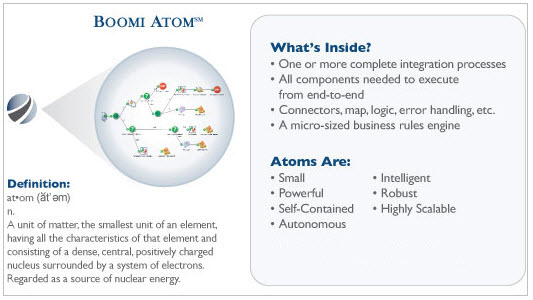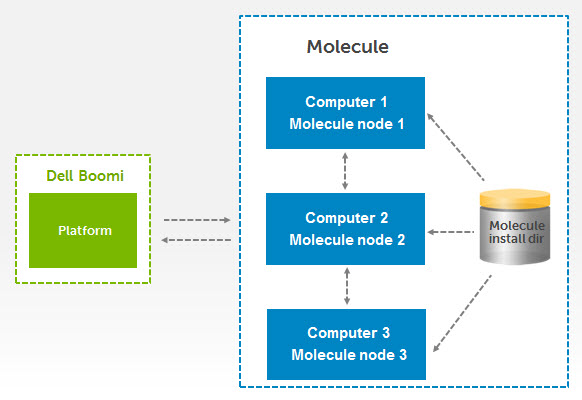Learn how Boomi Atoms and Molecules work in cloud-based integration. Discover when to use Atoms for local or cloud installation, and when Molecules are needed for load balancing and high availability. Get implementation support for your Boomi projects.

Boomi provides a leading cloud-based integration service which supports two types of deployment models:
When implementing Boomi in your organization, it’s essential to know when to use Boomi Atoms and Molecules. In over 90% of our projects, customers use the In-Cloud deployment model. Alternatively, on-premise deployment models that install local Atom components to run are needed especially when the customer has data compliance requirements that restricts data from leaving their firewall or location, or we need to access an older on-premise database or local system.
We can define a Boomi Atom as a lightweight, dynamic runtime engine. After deploying your integration operations to the Atom, it will include all the essential components that you need to execute your processes from end-to-end.
The components include connectors, transformation rules, and processing logic. The figure below can help you understand the in-depth working mechanism of a Boomi Atom.

Source: Dell Boomi
There are multiple ways to use Atoms within the Boomi atmosphere. You can either install Atoms directly into your local network which is required for an on-premise deployment model, or you can use one in the cloud directly for in-cloud deployment.
In case your integration environment demands you to connect resources behind a firewall, like your database, for example, or other local applications, you need to install Atoms locally.
The local Atom will then facilitate the entire integration process as the process, mappings, and execution is contained within the Atom runtime.
In case you only need to connect resources to the internet via web applications, you can go with Atom cloud installation. You don’t need to install any software or hardware to get going, as Boomi will manage everything for you.
We can define Molecules as single-tenant, multi-node runtime which allow more than one node to operate simultaneously. Molecules are an enterprise-level solution that we can use for deployment on multiple servers. Molecules boost load balancing and higher availability for critical integration processes.
A Molecule has multiple nodes, installed in more than one on-premise server. We group nodes on machines to make a Molecule. Keep in mind you will only manage the one Molecule runtime in your management pages, individual nodes are controlled by the head node. Here is a process flowchart of how a Molecule works.

Source: Dell Boomi
A Molecule runs integration processes, similar to an Atom, and the Boomi application manages it. The Molecule sends requests across all machines, which then go on to form a cluster. The distribution of requests helps in balancing the load between different devices, and it ultimately boosts the overall performance.
The head node is a single node in the cluster. The head node:
You can get by using Atoms in many cases. There are, however, situations when you would want to use Molecules:
In working with the SMB market we generally do not see processing volumes requiring the use of molecules. However, situations can occur quickly that demand a change in deployment model. For example, during the COVID-19 pandemic if you were a manufacturer of N95 masks or PPE equipment you could see your overnight sales orders jump from thousands to millions. To enable this type of exponential scaling would not necessarily require you to rewrite your Integration routines but rather simply change your deployment method.
Deciding when to use Atoms and Molecules depends on a number of factors. We can say that an Atom is a combination of single-tenant and single-node runtime engines. On the other hand, Molecules are similar to Atoms, but with multiple-node runtime engines. The table below shows the features of Atoms and Molecules so you know which is best for your use case.
| Features | Atom | Molecule |
| Multi-tenancy, which means it can be used by multiple accounts | X | X |
| Disk space monitoring | X | X |
| Supports integrations that will generate and/or receive a high volume of data | X | ✔ |
| Multiple nodes, which provide load balancing and failover support | X | ✔ |
| Forked execution (Disabled by default on Molecules) | X | ✔ |
| Available to customers | ✔ | ✔ |
| Available to Boomi partners | ✔ | ✔ |
Need help with your Boomi projects? Contact us by clicking the button below to learn how VistaVu can support your Boomi projects and provide managed services to maintain your environments.